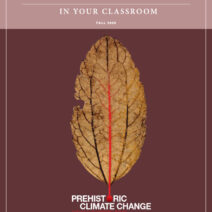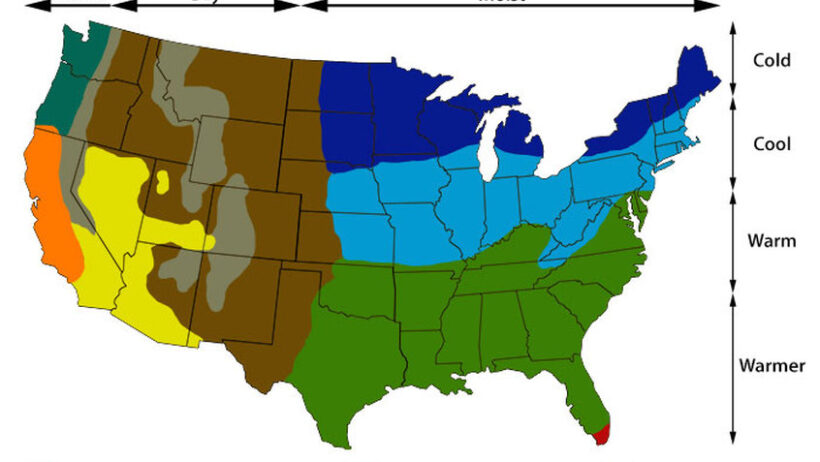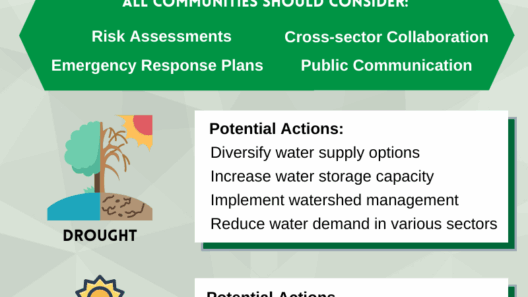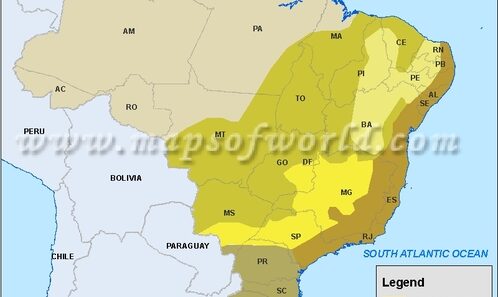The climate of the United States is a tapestry of diverse weather zones, each with its unique characteristics and idiosyncrasies. From the frigid tundras of Alaska to the balmy subtropics of Florida, the variations in climate across this vast country are pronounced and multifaceted. Understanding these climatic distinctions is paramount for appreciating the environmental complexities involved in climate change and its far-reaching implications.
To grasp the nuances of the U.S. climate, it is essential to explore the primary climate classifications that delineate its regions. The Köppen climate classification, a widely used system, classifies climates based on temperature and precipitation patterns. The distinct climate zones include arid, humid, polar, and temperate, each playing a significant role in shaping the ecological and social fabric of the nation.
Beginning with the arid zones, the American Southwest is emblematic of this climate type. States such as Arizona and Nevada experience extreme year-round temperatures with scant precipitation. This hot desert climate fosters a unique set of flora and fauna, well adapted to endure prolonged periods of drought. Iconic cacti and resilient desert springs thrive in this unforgiving environment. However, the vulnerabilities of these ecosystems, exacerbated by climate change, reveal the precarious balance between adaptation and survival.
Contrastingly, the humid subtropical regions, particularly found in the southeastern United States, exhibit a markedly different climate. States like Florida and Louisiana experience high temperatures coupled with substantial rainfall throughout the year. Here, towering palms and vibrant wetlands create a tapestry of biodiversity. Unfortunately, this region is also prone to hurricanes, a phenomenon intensified by climate change. The interplay of heat, moisture, and sea-level rise poses significant threats to coastal communities, raising alarms for residents and environmentalists alike.
Moving northward, one encounters the temperate climate zones characterized by four distinct seasons. The northeastern United States, extending from northern Virginia to Maine, exemplifies this diversity. This area experiences significant variations in temperature and precipitation throughout the year. The picturesque fall foliage is a hallmark of this zone, attracting a plethora of tourists each year. However, the recent trend of unpredictable weather patterns, such as unseasonably warm winters and intense storms, points to the undeniable influence of climate change on established norms. The repercussions extend far beyond aesthetics, as these changes affect agriculture, wildlife migration patterns, and even energy consumption.
A pivotal region in understanding climate complexity is the Great Plains, encompassing states such as Nebraska and Kansas. This region embodies a continental climate often marked by extremities—bitter cold in winter and sweltering heat in summer. The ample presence of tornadoes, particularly during the spring months, underscores the volatility inherent to a region that straddles disparate weather fronts. Agriculture in this area is intimately tied to these climatic conditions, as farmers navigate the vicissitudes of rainfall and temperature shifts. Climate change poses a considerable challenge for these agricultural systems, prompting discussions around sustainability and resilience.
Transitioning to the Pacific Coast, California’s climate is distinguished by a Mediterranean classification, characterized by dry summers and wet winters. This trend has led to an agricultural haven, renowned for its vineyards and orchards. Nonetheless, the increasing frequency of droughts has ignited conversations on water conservation and management. The looming threat of wildfires further complicates the landscape, showcasing the interconnectedness of weather patterns and ecological health. The urgency to adopt innovative practices in land management has never been more critical as regions adapt to these shifting paradigms.
Alaska presents a stark juxtaposition to the aforementioned climates, with its subarctic and tundra climates. This pristine wilderness plays a crucial role in the global climate system, acting as a barometer for climate change impacts. The permafrost that dominates much of Alaska’s landscape is rapidly thawing, releasing methane—a potent greenhouse gas—into the atmosphere. This alarming trend not only jeopardizes local ecosystems but ultimately contributes to global warming. Alaska embodies the narrative of a planet in flux, where the ramifications of climate change resonate far beyond its icy borders.
Conversing about the climate of the United States necessitates acknowledgment of the mountainous regions. The Rocky Mountains and the Sierra Nevada influence weather patterns across vast expanses, creating microclimates that defy easy categorization. Elevation plays a vital role in temperature, with conditions varying dramatically over short distances. These mountainous areas support diverse ecosystems but also face the brunt of climate-induced changes. Glacial retreats and shifts in species distributions highlight the urgent call for conservation efforts amidst changing temperatures.
In summation, the climate of the United States presents a compelling narrative replete with complexities and nuances. Each region, with its unique weather patterns, contributes to the intricate ecological mosaic of the nation. As climate change continues to reshape these landscapes, the implications resonate deeply, underscoring the urgent need for informed dialogue and sustainable practices. Understanding the diverse weather zones of the U.S. serves as a foundation for fostering awareness and catalyzing action, illuminating the interconnectedness of human existence and the planet’s health.
Engaging with these issues cultivates a deeper appreciation for the environment and the intrinsic value of preserving it. Awareness of the diverse climates spanning the U.S. can inspire curiosity, prompting individuals to explore their environmental impact while advocating for policies that prioritize sustainability and resilience. The journey towards an informed and proactive society begins with recognizing the significance of climate and weather in our everyday lives.








